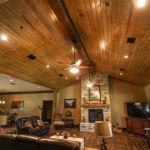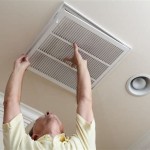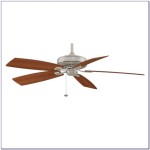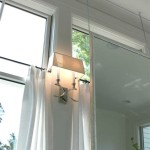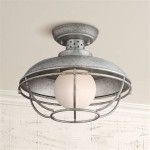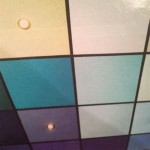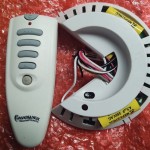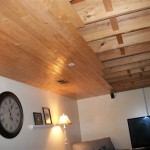What Do You Mean by Vaulted Ceiling in Spanish?
A vaulted ceiling, also known as a "bóveda" or "techo abovedado" in Spanish, is a ceiling with a curved or arched shape that is typically supported by pillars or columns. These ceilings are commonly found in historical buildings, architectural structures like cathedrals and palaces, and modern constructions. Vaulted ceilings create an impressive and spacious effect within a room, offering both aesthetic appeal and functional advantages.
Types of Vaulted Ceilings
There are various types of vaulted ceilings, each with its distinct shape and characteristics. Here are some common ones:
- Barrel vault: A continuous, semi-circular arch that spans the length of a room.
- Groin vault: Created by the intersection of two barrel vaults at right angles, forming distinctive groins.
- Rib vault: A vaulted ceiling reinforced with diagonal ribs that meet at the crown of the vault.
- Cloister vault: A complex vault with four groin vaults meeting in the center, forming a square.
- Fan vault: An elaborate type of vault with ribs that spread out like a fan from the center.
Benefits of Vaulted Ceilings
Vaulted ceilings offer several advantages:
- Spaciousness: The upward curve of the ceiling creates a feeling of height and openness, making even small rooms appear larger.
- Natural lighting: Vaulted ceilings often incorporate windows or skylights at the highest point, allowing for ample natural light to enter.
- Acoustic enhancement: The curved surfaces of a vaulted ceiling effectively absorb sound, reducing echoes and improving acoustics.
- Aesthetic value: These ceilings add a dramatic and elegant touch to any interior design, adding character and timeless appeal to a space.
- Ventilation: The sloping surfaces of vaulted ceilings promote better air circulation, reducing humidity and increasing comfort.
Considerations for Vaulted Ceilings
While vaulted ceilings offer many benefits, it's important to consider some factors before incorporating them into a design:
- Height requirements: Vaulted ceilings require ample headroom to maintain a comfortable and proportional space.
- Structural support: The weight of a vaulted ceiling requires sturdy walls or additional support structures to ensure stability.
- Cost: Installing vaulted ceilings is generally more expensive than traditional flat ceilings due to the complex construction process.
- Maintenance: The height and intricate detailing of vaulted ceilings may make them challenging to maintain, especially when it comes to cleaning and repairs.
Overall, vaulted ceilings are an architectural element that can elevate the beauty, functionality, and grandeur of any interior space. By carefully considering the types, benefits, and considerations outlined above, one can create awe-inspiring and memorable spaces that stand the test of time.

Vault Architecture Wikipedia

Vaulted Brick Ceilings Revealed Inside Barcelona Apartment Renovation
What Does Vaulted Ceilings Mean Quora

What Is A Vaulted Ceiling Pros And Cons Of Ceilings

What Is A Vaulted Ceiling Pros And Cons Of Ceilings

What Is A Vaulted Ceiling Pros And Cons Of Ceilings

Vaulted Brick Ceilings Revealed Inside Barcelona Apartment Renovation

7 Fantastic Ideas To Give You A Spanish Style Home Archways Ceilings
Vaulted Ceiling Embracing The Past Through Modern Design

Inspiring Vaulted Ceiling Ideas In Interior Design Types Pros And Cons
Related Posts

